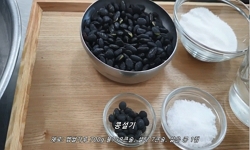The core questions for determining nitrogen topdress rate (Npi) at panicle initiation stage (PIS) are "how much nitrogen accumulation during the reproductive stage (PNup) is required for the target rice yield or protein content depending on the...
http://chineseinput.net/에서 pinyin(병음)방식으로 중국어를 변환할 수 있습니다.
변환된 중국어를 복사하여 사용하시면 됩니다.
- 中文 을 입력하시려면 zhongwen을 입력하시고 space를누르시면됩니다.
- 北京 을 입력하시려면 beijing을 입력하시고 space를 누르시면 됩니다.

유수분화기 식생지수와 SPAD값에 의한 벼 질소 수비 시용량 결정 = Determining Nitrogen Topdressing Rate at Panicle Initiation Stage of Rice based on Vegetation Index and SPAD Reading
한글로보기https://www.riss.kr/link?id=A76153367
- 저자
- 발행기관
- 학술지명
- 권호사항
-
발행연도
2006
-
작성언어
Korean
- 주제어
-
KDC
524.2
-
등재정보
KCI등재
-
자료형태
학술저널
- 발행기관 URL
-
수록면
386-395(10쪽)
- 제공처
- 소장기관
-
0
상세조회 -
0
다운로드
부가정보
다국어 초록 (Multilingual Abstract)
The core questions for determining nitrogen topdress rate (Npi) at panicle initiation stage (PIS) are "how much nitrogen accumulation during the reproductive stage (PNup) is required for the target rice yield or protein content depending on the growth and nitrogen nutrition status at PIS?" and "how can we diagnose the growth and nitrogen nutrition status easily at real time basis?". To address these questions, two years experiments from 2001 to 2002 were done under various rates of basal, tillering, and panicle nitrogen fertilizer by employing a rice cultivar, Hwaseongbyeo. The response of grain yield and milled-rice protein content was quantified in relation to RVIgreen (green ratio vegetation index) and SPAD reading measured around PIS as indirect estimators for growth and nitrogen nutrition status, the regression models were formulated to predict PNup based on the growth and nitrogen nutrition status and Npi at PIS. Grain yield showed quadratic response to PNup, RVIgreen around PIS, and SPAD reading around PIS. The regression models to predict grain yield had a high determination coefficient of above 0.95. PNup for the maximum grain yield was estimated to be 9 to 13.5 ㎏N/10a within the range of RVIgreen around PIS of this experiment. decreasing with increasing RVIgreen and also to be 10 to 11 ㎏N/10a regardless of SPAD readings around PIS. At these PNup"s the protein content of milled rice was estimated to rise above 9% that might degrade eating quality seriously. Milled-rice protein content showed curve-linear increase with the increase of PNup, RVIgreen around PIS, and SPAD reading around PIS. The regression models to predict protein content had a high determination coefficient of above 0.91. PNup to control the milled-rice protein content below 7% was estimated as 6 to 8 ㎏N/10a within the range of RVIgreen and SPAD reading of this experiment, showing much lower values than those for the maximum grain yield. The recovery of the Npi applied at PIS ranged from 53 to 83%, increasing with the increased growth amount while decreasing with the increasing Npi. The natural nitrogen supply from PIS to harvest ranged from 2.5 to 4 ㎏/10a, showing quadratic relationship with the shoot dry weight or shoot nitrogen content at PIS. The regression models to estimate PNup was formulated using Npi and anyone of RVIgreen, shoot dry weight, and shoot nitrogen content at PIS as predictor variables. These models showed good fitness with determination coefficients of 0.86 to 0.95. The prescription method based on the above models predicting grain yield, protein content and PNup and its constraints were discussed.
동일학술지(권/호) 다른 논문
-
소규모 경작지에서 질소 변량시대가 벼 수량 및 품지에 미치는 영향
- 한국작물학회
- 최민규(Min-Gyu Choi)
- 2006
- KCI등재
-
- 한국작물학회
- 최원영(Weon-Young Choi)
- 2006
- KCI등재
-
- 한국작물학회
- 박홍우(Hong Woo Park)
- 2006
- KCI등재
-
논밭 재배지 조건에 따른 양파 채종용 모구의 수량 및 저장력 변화
- 한국작물학회
- 조상균(Sang Kyun Cho)
- 2006
- KCI등재




 ScienceON
ScienceON KISS
KISS







